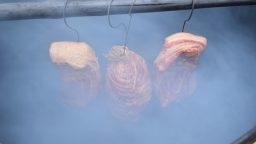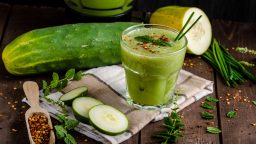Lemons, good for making lemonade, adding to your tea with honey, squeezing over fish, the list could go on and on.
It even goes on to some amazing home remedies! Who knew? Someone apparently because we’ve been able to put together a list of 12 you can try in the comfort of your own home.
Break up Congestion in Your Sinuses and Chest
Getting that familiar sore throat or wheezing sound? No problem. Heat 4-6 oz of water and mix in 2 Tbsp lemon juice, 2 Tbsp apple cider vinegar, and 2 Tsp of honey.
The honey will soothe your throat while the lemon will help break up the mucus and provide Vitamin C to boost your immune system.
Why Are Allergies Worse in the Fall?
Sooth Menstrual Cramps
First thing in the morning mix the juice from one lemon with 1 Tbsp honey into warm water. The combination has an alkalizing effect on a women’s body that helps keep you hydrated.
Ease Headaches
You have two choices for this one. 1. Add a few wedges to water or tea and drink. 2. Rub a wedge or slice against the temples and forehead.
Or, get crazy and do both.
Fever Reducer
To help keep a fever from getting too high, mix 1.5 Tsp Cream of Tartar, 1/2 Tsp Lemon Juice, 2.5 Cups Warm Water, and 1/2 Tsp Honey. Sip slowly.
To Help Treat and Avoid Kidney Stones – Make Lemonade
Yep, you read that right. According to an article on WebMD, doctors prescribe potassium citrate for patients prone to this painful ailment. However, it’s now known that lemon juice is packed full of natural citrate. And, while it doesn’t work as well as the medication, if you are trying to avoid adding another prescription to your routine, this “treatment” may be an option.
The article gives a recipe of ½ Cup Concentrated Lemon Juice mixed with 7 cups of water. To avoid excess sugar intake, use as little as possible, or a substitute like honey or stevia.
If you would prefer to use fresh lemon juice, 2 Tbsp of concentrate equals one whole lemon. Don’t worry; I’ve done the hard math for you. Use 4 lemons for this recipe.
Can Apple Cider Vinegar Boost Gut Health?
Helps You with Your Weight Loss Goals
Lemon juice helps detox your body, curbs your appetite and aids in better digestion.
Help your weight loss along by drinking lemon water. Need a little sweetness? Add a touch of honey.
Consider making this in large batches and keeping it in your fridge for easy access.
4 Reasons Apple Cider Vinegar Works For Natural Weight Loss
(Will Open In A New Window)
Treat Acne
Losing your battle with acne? Here is a completely natural way to go about it. First, wash your face with mild cleanser and rinse. Rub a slice of lemon over affected areas or dab fresh lemon juice on with a cotton ball. DO NOT RINSE. Leave overnight. Rinse first thing in the morning and moisturize. Repeat every night.
If you discover your skin is sensitive to lemon juice, dilute it with water before applying. For more ways to use lemons for fight acne, check out this post at HomeRemediesForLife.com.
Take the Itch Out of Insect Bites
Insect bites are annoying at the least and can lead to infection at the worst if scratched into an actual wound. To ease these irritations naturally, simply apply a lemon slice over the area and let it soak for a few minutes. Alternatively, soak a cotton ball in fresh juice and apply liberally to the bite area.
Related Article: Home Remedies Only Mother Nature Could Come Up With
Get Rid of Pesky Blackheads
This remedy only takes 5 minutes and doesn’t require ripping an adhesive strip off your nose at the end. This will be the quickest solution you can find for your blackhead problems. Take half of a lemon and pour approximately 1 Tsp honey onto the cut surface. Rub the lemon all over your face but pay extra attention to the areas you are prone to blackheads. Leave this mixture on for 5 minutes and then rinse with cold water.
Turn Yellow Nails White
Nail polish looks great after a manicure, but it’s also notorious for turning your nails yellow. If you aren’t the type that keeps their nails polished 24/7 all year round, here is your solution.
Mix approximately 1 Tbsp Baking Soda, ½ Tsp Olive Oil, and 1 Tbsp Fresh Lemon Juice into a paste. Enjoy the volcano effect fizzle of the lemon and soda combining. Apply the paste to your nails and let sit for 5 minutes then rinse and moisturize.
So, now you know, when life gives you lemons…use them!















